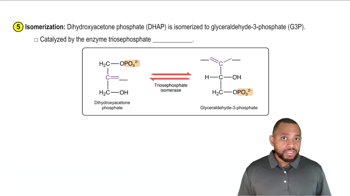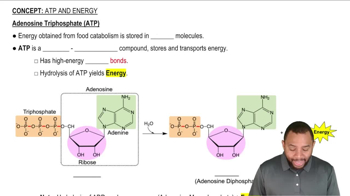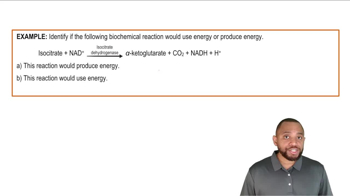How many ATP or NADH are produced (or required) in each of the following steps in glycolysis?
c. phosphoenolpyruvate to pyruvate
 Verified step by step guidance
Verified step by step guidance Verified video answer for a similar problem:
Verified video answer for a similar problem:



 3:14m
3:14mMaster Glycolysis Summary Concept 1 with a bite sized video explanation from Jules
Start learning